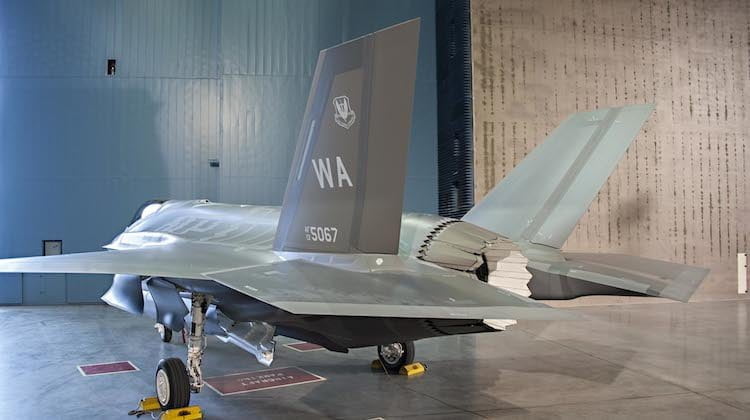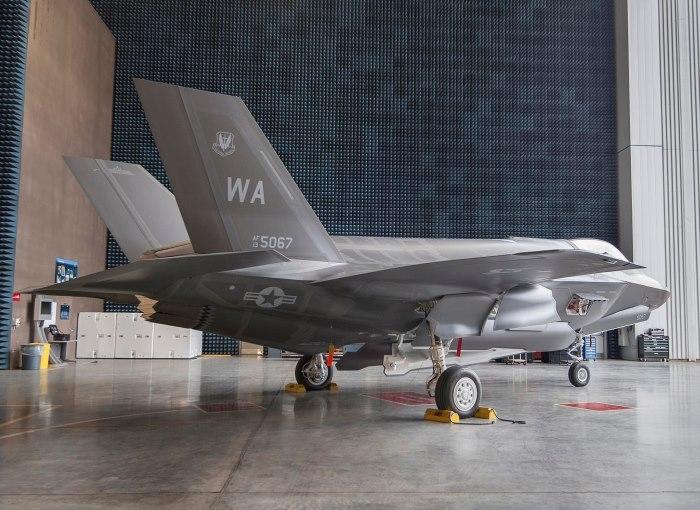2015-07-27 A key aspect of the F-35 global supply chain is suppliers from a variety of nations building parts which become elements of other nations airplanes.
It is not simply about Australia building parts for Australian F-35s; it is about building for the global fleet.
An example are the vertical tails built by Marand Australia.
On July 17, 2015, the first F-35 possessing two vertical tails manufactured by Australian-based engineering company, Marand, took flight.
The plane which flew was AF-73 and the plane will joint the USAF fleet later this year at Nellis AFB.
According to a story in the Australian Defence Magazine:
“The first flight of this particular F-35A marks a monumental achievement for Marand and our dedicated employees,” said Marand Chief Executive Officer Rohan Stocker.
“It has been an incredible journey from the point where we initially bid for this work with BAE Systems to witnessing the reality of our vertical tails being an integral part of the F-35.
This is a great moment, and we look forward to continuing to build our future as a global supplier to the F-35 program as well as to other advanced manufacturing opportunities in Australia.”
The first flight of AF-73 is an important milestone for Marand, BAE Systems and Australia, demonstrating the significant industrial benefits the F-35 program brings to the growing Australian aerospace industry.
The F-35 vertical tails work is contracted to Marand by BAE Systems.
This is one of the largest manufacturing projects for the Australian F-35 program, with 722 ship sets planned.
During a visit to Australia last year, an interview with David Ellul, Managing Director of Marand, focused on the F-35 in Marand’s technological appraoch.
The intersection between the evolution of the company’s capabilities and their engagement in the program, a two-way street approach, was highlighted throughout the interview.
Ellul indicated that Marand started as a firm supporting the automobile industry in Australia and over time has transitioned into the aerospace and rail businesses.
In fact, they have migrated over the past decade from having approximately 90% of their business in the automotive sector, to now less than 1% in automotive as the company has migrated to work in the other sectors in its portfolio.
Within aerospace, prior to F-35, their main client was Hawker deHaviland (now Boeing Aerostructures Australia) for whom they designed and manufactured Aerospace Tooling.
The initial engagement of Marand in the F-35 program was designing and building a unique trailer for installing the F-135engine into the F-35.
The trailer also removes the engine.
According to Ellul:
The requirement is quite complex.
It has to remove and replace the engine within a tight time frame in all of the environments where engines are changed.
From the production line to ship board and land based sustainment.
It has to do it for all three variants of the plane.
It has been a design and manufacturing job from the beginning.
It is a clever piece of equipment that solves the customer’s requirements.
We are very proud of our design and engineering capability.
Prior to the F-35 program engagement, Marand has not been a global exporter.
This has changed with the F-35 program.
The company has added five clients through the F-35 program, which has allowed it to grow its export business.
Question: Why Australia? Why Marand?
According to Ellul:
Australia has a tradition of innovation and although we are not a large company – we have 250 employees – we have diversified design and manufacturing experience and expertise and are able to solve complex problems and deliver good value, as we have done with the F-35 engine trailer.
The second part of our F-35 work is in design and manufacture of complex Aerospace tooling.
We have used our design and engineering capability to develop production tooling that makes our customers more productive.
Over 1200 tools to all corners of the F-35 world. And the quality of our work has been recognized by Lockheed Martin as well.
In 2009, the CEO of Lockheed Martin, Bob Stevens, visited our company and gave us an award recognizing our role as a leading tooling company in the program.
The performance on the engine trailer and tooling provided the opportunity to be considered by Lockheed and their partner BAE Syestms to provide Vertical Tails for the F-35 program.
According to Ellul:
We recently had a ceremony to celebrate the delivery of the first Australian vertical tail set for the F-35.
Next year we will deliver 4-6 tail sets and by 2019 we will be delivering around 70 per year for the program. As the second source, we will do around 30% of the total production of vertical tail sets.
Once production ramps up, we’ll be looking for other opportunities on Aerospace structural work.
Five years ago, there’s no way we would have proved that we had the capability.
F-35 has done that for us.
But, with the ongoing help and support of Lockheed Martin and BAE Systems, we’ve created a whole new capability in Australia
And without them giving us the opportunity and trusting us and working with us and training us, okay, it wouldn’t have happened.




